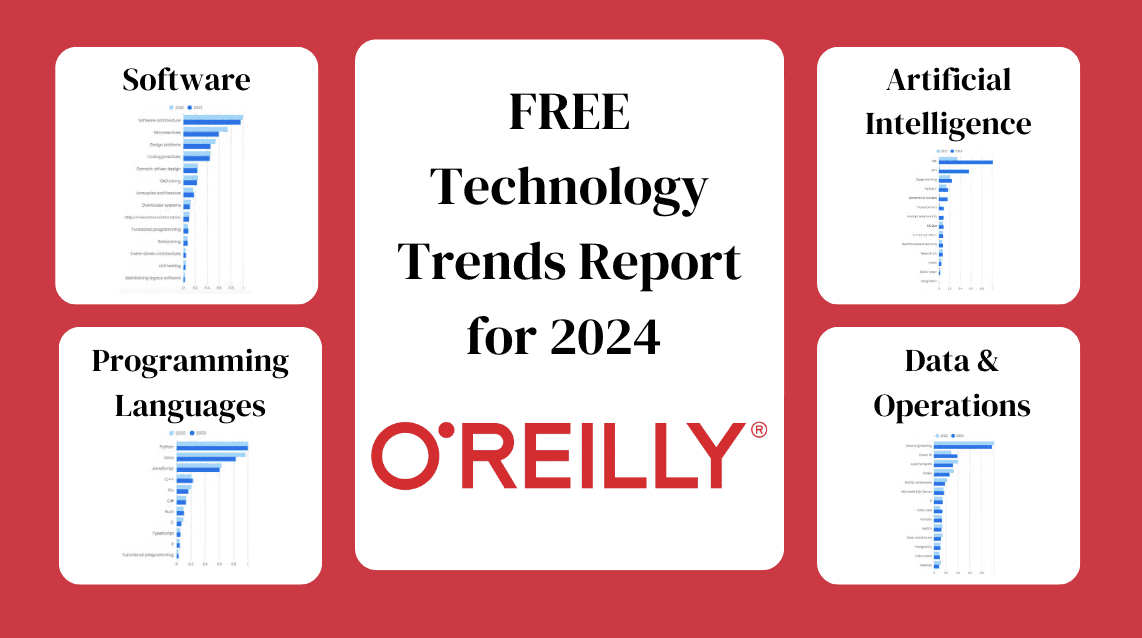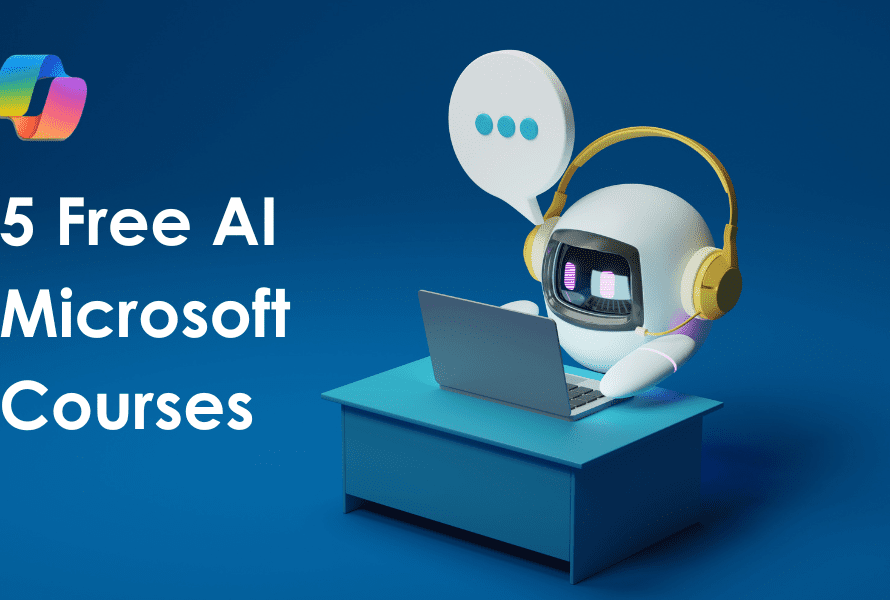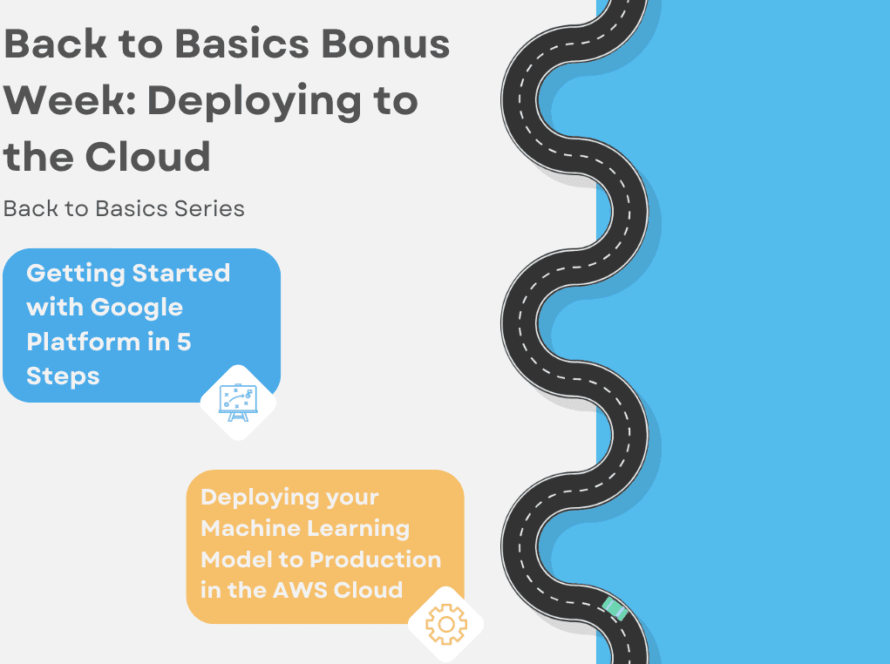2023 was an interesting year. We have been seeing for decades how the world of technology has gone through different cycles and made an impact on our society and economy, and now a lot of us are eager to find out what the future will look like.
With all that happened in 2023, there was one event that shook the whole world and was the ultimate AI breakthrough – ChatGPT.
It changed a lot of things. How people worked. How it is improving employee’s everyday workflow. Insight to the ability of AI. As well as the ethical implications it has.
In O’Reilly’s new Technology Trends Report for 2024, written by Mike Loukides – we will learn what to expect from 2024 by getting insight into the O’Reilly learning platforms usage and what it tells us about where the industry is heading.
So what are the technology trends for 2024?
In 2023, there was a decline in software development as a whole, from learning about the sector to a decrease in jobs. Although this is what the data shows, software development is still very important and its need with the movement of AI remains unchanged.
Generative AI is a significant factor, and 92% of developers use AI for low-level coding. It raises the question about the potential of AI being used in high-level designs, pushing an emphasis on how humans collaborate with generation AI systems moving forward. This shows us the importance of software development shift in mastering architecture that is more suited for complex environments that are data intensive.
Some stats from the O’Reilly report:
- 3.9% decline in software architecture interest
- 8.9% increase in enterprise architecture interest
- 9.8% increase in functional programming interest
- 40% increase in event-driven architecture for design systems that process data from multiple streams
With generative AI tools assisting a lot of developers with their day-to-day tasks, such as coding tasks we are naturally seeing a decline in content usage of most programming languages. This has led to a decrease in more people wanting to go down the traditional learning pathway and career development. There has been a decrease in Stack overflow questions and also GitHub pull requests, suggesting that developers have shifted from seeking advice from other developers and are solely reliant on generative AI.
Some stats from the O’Reilly report:
- 92% of programmers are leveraging generative AI for coding tasks
- Python remains the most popular language
- C++ and Rust are increasing in growth due to their relevance in domains such as embedded systems and memory-safe programming
When we speak about AI today, the focus is on the GPT family. ChatGPT launched in November 2022 and has been the focus ever since. With this being said, more industries and organizations have a broader interest in natural language processing (NLP) and generative AI models such as Transformers. There has also been a shift in tools being used with Pytorch becoming more popular than TensorFlow.
Some stats from the O’Reilly report:
- GPT content usage 3600% increase in the past year
- NLP interest increased by 195%
- Deep learning and reinforcement learning continue to grow
- Increase in tools such as PyTorch, LangChain and vector databases.
The importance of data remains unchanged as more companies are reliant on it for their operational and strategic processes. Data science and business analytics tools continue to increase, reflecting the importance of them in business operations. Data engineering has also seen a minor decline, however, it remains important when managing large-scale data storage. There is an increasing demand for AI-driven real-time models, and effective data platforms that provide flexible data management solutions.
Some stats from the O’Reilly report:
- An increase in Microsoft Power BI, SQL Server and R statistics toolbox
- A decrease in tools such as Kafka, Spark and Hadoop
- A decrease in data warehouses, and an increase in data lakes and data meshes.
There have been a few shifts in the operations sector, with more developer and engineering platforms emerging. Operating systems such as Linux have seen a decrease in their content usage due to an increase in automation. This is the same for Kubernetes, as new emerging tools are making it easier to manage the complexity without needing in-depth knowledge. Some terminology is also being used less, but that does not mean it is going away, it just means that emerging technologies are improving the operational experience by embedding existing practices.
Some stats from the O’Reilly report:
- A decrease in the need for in-depth Linux knowledge among developers
- A decrease in using terms such as DevOps and SRE
- Increase in supply chain management interest
- 14% increase in MLOps interest
If you would like to learn what O’Reilly has learnt about what 2024 will look like for security, cloud computing, web development, design, and professional development – get your free copy by clicking here.
2023 was a year for the books. A lot happened, with an increase in generation AI having an impact on so many industries, sectors and disciplines.
Are we moving towards understanding problems and finding solutions for them?
With this being said, will we see an increase in a deeper knowledge of aspects such as architecture, design and also human relations?
Read the report here and let us know what you think in the comments!
Nisha Arya is a Data Scientist and Freelance Technical Writer. She is particularly interested in providing Data Science career advice or tutorials and theory based knowledge around Data Science. She also wishes to explore the different ways Artificial Intelligence is/can benefit the longevity of human life. A keen learner, seeking to broaden her tech knowledge and writing skills, whilst helping guide others.




